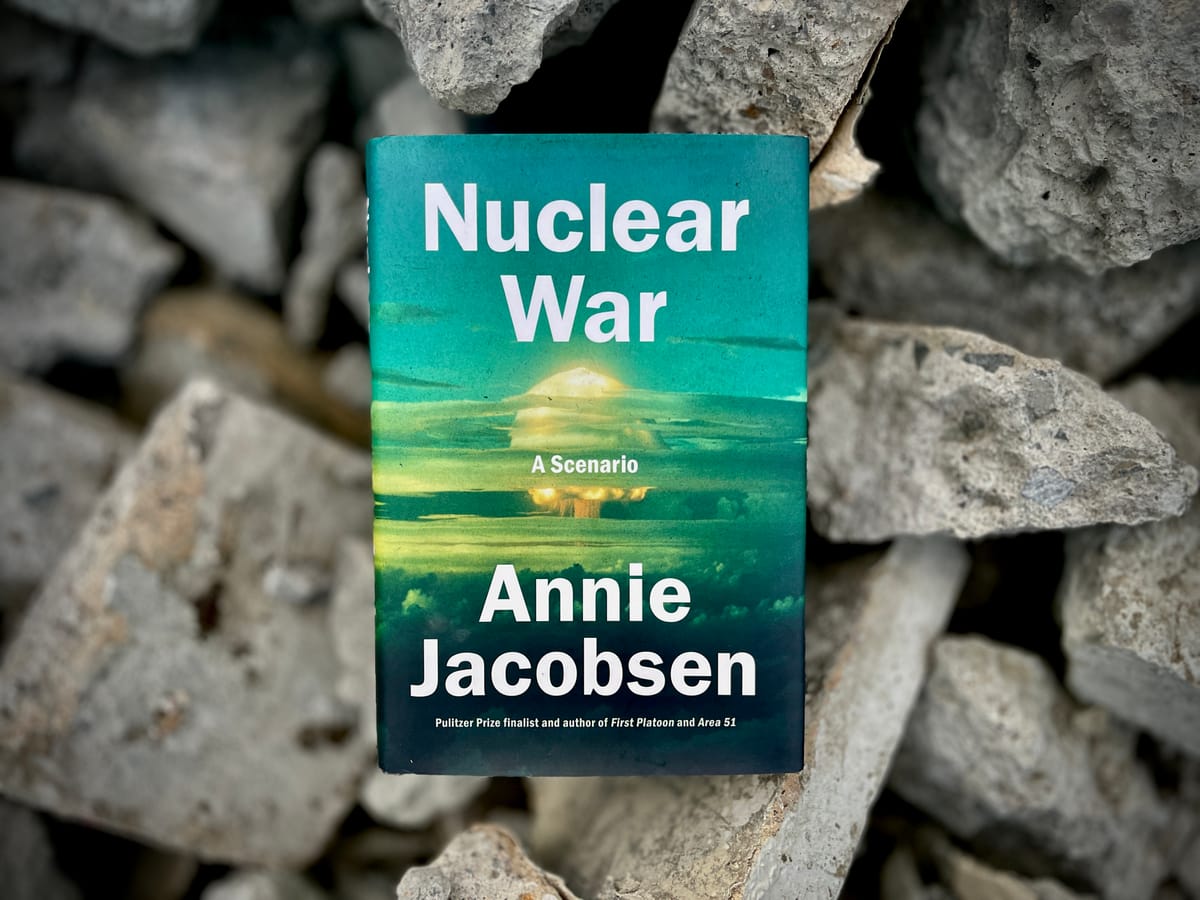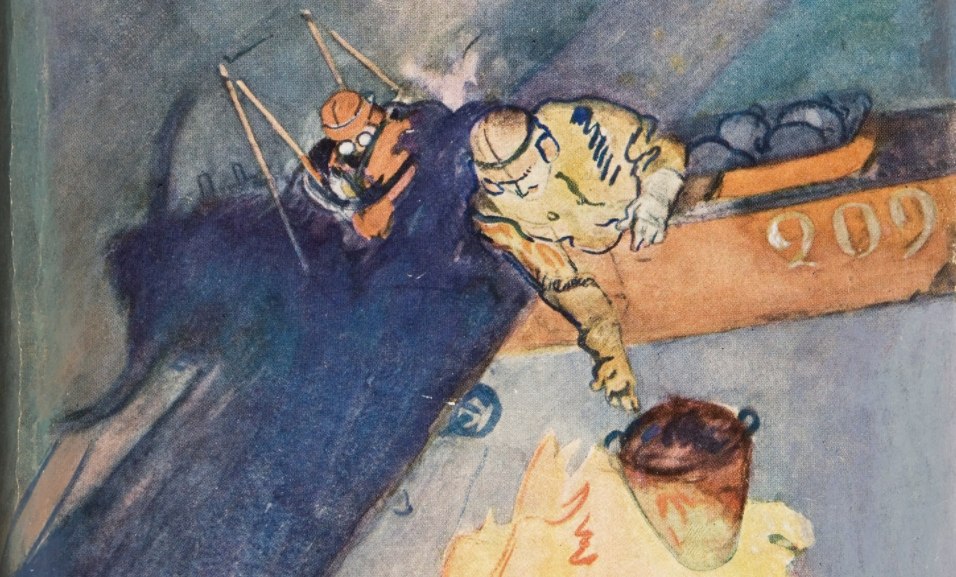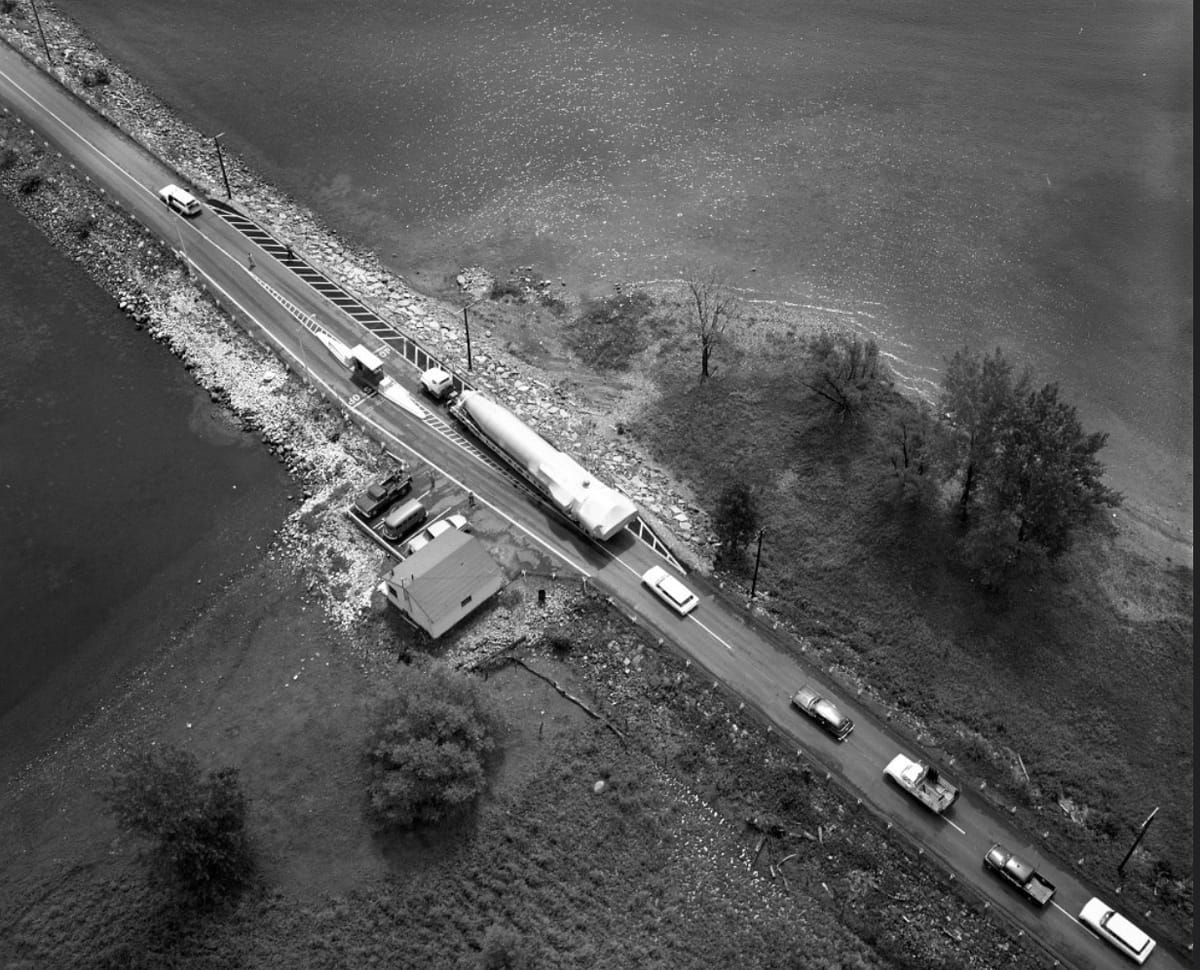Trinity’s endgame
A scary, flawed warning about the dangers posed by our nuclear arsenal

79 years ago today, a massive fireball erupted in an isolated stretch of land in New Mexico. It was the end result of the Manhattan Project, the first detonation of a nuclear warhead. The explosion unlocked a new era for humanity: the Cold War. A new book examines the frightening possibilities that the moment could lead to.
Known for heavily-reported books about topics like Operation Paperclip and black ops strike teams and places like Area 51, Annie Jacobsen has built a career writing about some of the modern world's more frightening geopolitical issues. The latest focus of her attention is probably the most horrifying: what would a nuclear war look like if one started today? Her answer comes in the form of a speculative book: Nuclear War: A Scenario, which looks, minute by minute, at what would happen if a country decides to launch a nuclear weapon against the United States.
For decades, a nuclear war was not too far from an abstract idea. Following the bombings of Hiroshima and Nagasaki at the end of the Second World War, the US and Soviet Union engaged in a high-stakes game of nuclear escalation, adding nuclear warheads to their respective arsenals in an effort to deter one another from an outright attack as both worked to influence and control broad swaths of the globe. Children hid under desks, families built underground bunkers and stocked up on non-perishables, all while elements of the US government plotted out ways to launch overwhelming attacks against anyone who dared launch a nuke our way.

The conflict between the two superpowers grew heated at points, with tensions flaring off the shores of Cuba in 1962 during the Cuban Missile Crisis, but tapered off and petered out through the 1980s and with the dissolution of the USSR in 1991. While the prospects of nuclear war slipped out of the limelight in the 1990s and 2000s, the ongoing war in Ukraine serves as a vivid reminder that not only do many of those warheads still exist, but that the possibility of the use of nuclear weapons still poses a very real threat to humanity's existence.
In that environment, popular culture has stepped in to show what those dangers might look like. Movies like The Terminator and Terminator 2, Wargames, and Threads, and shows like Battlestar Galactica and Chernobyl have painted a picture for the destruction and fallout that nuclear war brings with it. But entertainment can be a poor framework for warning about these sorts of horrors: a story of characters encountering nuclear war has to be more than just their deaths, and most delve into narratives of post-apocalyptic survival that tries to convey some sort of message that there's a slim chance that there will be people who'll survive to carry on humanity's legacy.

Jacobsen's book paints a bleak picture of what we could face in such a situation. In doing so, she joins a crop of books that blend in-depth reporting with a fictional narrative (FICINT), such as Jeffrey Lewis's The 2020 Commission Report on the North Korean Nuclear Attacks Against the United States, James Stavridis and Elliot Ackerman's 2034: A Novel of the Next World War and P.W. Singer and August Cole's Ghost Fleet: A Novel of the Next World War to piece together a plausible narrative from real-world events. These types of books aren't exactly predictive (although there have been moments where it feels like they are coming to life), but they're designed to spark some conversation and consideration about the state of the world.
The book opens with a dramatic scene: a "bolt from the blue" attack in which a 1 megaton nuclear bomb destroys Washington DC. The bomb obliterates the city, and Jacobsen takes us through the gory details of the ensuing firestorm, and radioactive fallout to show just how horrifying such an attack would be.
The rest of the book plays out like a grim version of the TV show 24. After an overview of the Cold War and the strategic planning that the US put into place over decades, we covers the end of the world in three 24-minute intervals.
In the first, she takes us through the scramble of actions that would ensue the second the US detects the launch of a potential ICBM threat – in this case, from North Korea. We follow the steps as various satellites, radar stations, and intelligence analysts go on high alert to identify and track the incoming missile. We follow alert goes up the chain to the president, and the chaos that ensues as every person along the way has to make world-altering decisions in mere seconds. We learn that that once a nuke is on its way, that there's very little that we can do to stop it, and the pressures that surround the President as he comes to the decision to launch a counter-attack.
From there, we enter the next 24 minutes as Jacobsen takes us through what happens as the bombs start flying, and adds in even more trouble: a submarine-launched attack missile attack against a nuclear power plant in California, laying waste to the West Coast, followed closely by the destruction of Washington DC. We learn about the US's capabilities and the efforts to evacuate the President and policymakers from the nation's capitol in a desperate attempt to preserve the chain of command. As mushroom clouds sprout over the US and missiles head toward North Korea, Russia quickly follows, following its protocols and procedures, prompting another volley of nuclear bombs in both directions.
In the final 24 minutes, nothing is held back, and what policymakers who've survived launch the next salvo, unleashing a nuclear Armageddon that will reduce the human population to miniscule levels. In the last section, those who survive will have to endure a hellish world, recognizing that those who perished were probably the lucky ones. From beginning to end, the world comes apart in a mere 72 minutes.
Jacobsen has attracted some criticism from policy wonks for some of her research in this book: citing outdated statistics or theories and the general dramatic, cinematic way that she plays this story out. (One element involves an EMP strike against the US, which seems to be something of fringe theory.) Read as a novel, it's scary, but it's ultimately unsatisfying because it's a book with no narrative, just cause and effect. There's no explanation for the sudden attack, there are no characters to follow other than individuals with titles. Other works of FICINT, like Singer and Cole's Ghost Fleet, which tackles some of the same ideas and themes, works much better as a device for examining and considering these systemic issues.
But that doesn't really seem to be the point of the book. While there might be some factual issues and weak assumptions at play, the core issue that Jacobsen highlights isn't the pedantic sequence of events that takes place, but a criticism of the system that we've found ourselves unwittingly part of: the greased rails that brings us from a normal day to the end of the world in 72 minutes.
This isn't a new argument, but it's retold in vivid, excruciating detail. It's an echo of films like Stanley Kubrick's Dr. Strangelove, Christopher Nolan's Oppenheimer, and plenty of science fiction authors who've warned that we live in a world with our fingers poised over a big, red launch button, and that it wouldn't take much to press it.
As the battlefield becomes encumbered with technology, the amount of time available to leaders and decisionmakers drops. Where generals and strategists might have had weeks to consider their next moves hundreds of years ago, the amount of time that the advent of nuclear allots comes down to seconds. Drones and automated systems – as detailed in books like P.W. Singer's excellent Wired For War: The Robotics Revolution and Conflict in the Twenty-First Century or Paul Sharre's Army of None: Autonomous Weapons and the Future of War – bring about the potential for decisions that need to be made faster than the human mind can operate.

Jacobsen touches on the role that automation plays in these situations, and how frighteningly close we've come to all-out nuclear war, such as when training scenarios were accidentally loaded into the systems to when machines have misidentified everything from flocks of birds to the moon as likely ICBM launches, averted only at the last minute by the people inserted into the systems who took the time to question what they were seeing and hesitated. In a war where decisions need to be made in mere minutes, those crucial seconds are all the more important, and show that there is reason to hope that we won't suddenly find ourselves irradiated.
The rise of nuclear conflict came alongside the use of statistics and mass information on the part of policymakers, splitting apart the human condition and decision-making from cold automation. Modern conflict has increasingly become a numbers game, with strategists relying on probability and raw data to make their decisions, setting aside the horrific cost that it exacts from the people in and around the battlefield. Mutually Assured Destruction (MAD), was one of those numbers games, an ever-increasing count of how many more nuclear weapons each country held, and how many times each could destroy the world if it came to it. At the end of the day, Jacobsen points out with this book, those numbers are meaningless: when the world is covered in radioactive ash, will it matter who pulled the trigger first?
This is what Nuclear War: A Scenario is warning against: it's a narrative that cuts through the numbers, the rationale, the theories, strategies, think pieces, and bullshit to hit the reader over the head with a hammer: a nuclear war might not play out exactly like it does in this book, but all of the infrastructure is in place for the same exact outcome: a planet that's rendered uninhabitable because of our own folly. What's scary is how quickly and easily that 72 minutes could come and go.